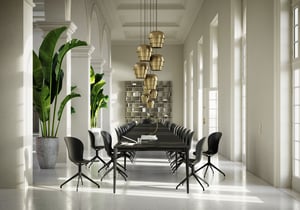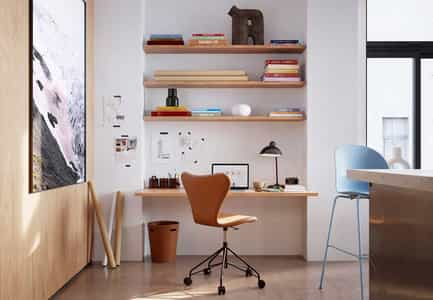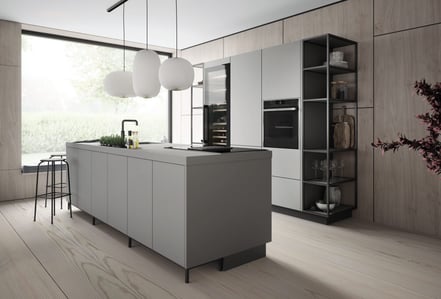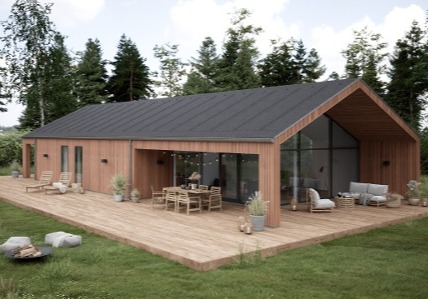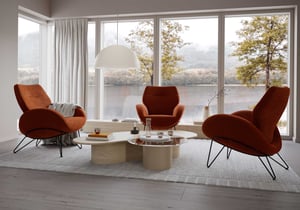The e-commerce sector grows significantly more competitive each year, and especially now, after a huge push toward online shopping in the wake of the Covid-19 pandemic. As a result, e-tailers and brands with an online presence must work harder to provide a rich, rewarding experience for their target market.
Product configurators have emerged as a viable tool for both increasing the attractiveness of a brand’s website and enabling the customer to become more engaged in their buying journey. What is product configuration? It's an advanced tool that can be used to enable customers to select options and features of a complex product, and subsequently view a real-time 3D image of that product.
Consider some product configurator examples, such as a furniture brand allowing you to select different colors and fabrics for your new sofa set. Or, a kitchen designer utilizing a kitchen configuration tool to enable customers to visualize a 3D rendering of their new kitchen. Product configuration software can be applied to a number of complex products, serving as a unique and memorable touchpoint along the eCommerce customer journey map.
4 WAYS A CONFIGURATOR improves the customer journey
- Increased engagement
- Product visualization
- Suggested product configurator examples
- Omnichannel experience
Let’s explore each of these in more detail so that you can see for yourself how integrating a product configuration website with your e-commerce site can serve to deliver a strong ROI and increase your customer base.
You might also like: "12 Customer Experience Trends for 2022 that you need to consider"
Increasing customer engagement with product configuration software
When an online shopper is presented with the opportunity to select options and features on a particular product, product configurators fulfill two important roles and create a memorable touchpoint. One, it increases customer engagement by enabling them to take a more active role in the ecommerce customer journey. Two, it fulfills the growing consumer expectation for increased personalization.
Personalization, in turn, serves to improve the customer experience and increase both customer loyalty and sales. In fact, 80% of consumers are more likely to make a purchase from brands that offer a personalized experience [I]. So, already you can surmise that adding a product configurator touchpoint to the customer journey map can yield great results.
Product configurator examples provide the customer with important visuals
Visuals as part of a marketing mix have always been important. Online articles that feature visuals, for example, receive over 90% more views than articles consisting of text only [II]. Subsequently, visuals are also an important part of the ecommerce customer journey, especially when it comes to the impact visuals can make on the purchase decision.
Today’s consumers are consistently searching for product visuals on social media platforms such as Instagram and Pinterest. These photos are often intriguing and engaging. The product visuals on your e-commerce site should be the same. And if your products are available in a variety of styles, or with different features and options, then you’ll need product configurator software to effectively showcase all the different combinations, as opposed to a single stock photo.
Visual merchandising via product configuration gives customers the opportunity to visualize the exact product they desire, serving to create a more immersive shopping experience and increase sales. And, being able to present a 3D rendering of the product that appears as close to the actual product as possible eliminates disappointment and reduces the return rate. And when you consider that 67% of consumers say that they consider the quality of an image to be a very important factor in influencing their purchase decision, you realize how product configuration can be a great aid in the customer’s online shopping journey [III].
You might also like: "Vipp's success with product configuration"
Guidance for the consumer and increased opportunity for upselling for the retailer
The third benefit of product configurators affects both the consumer and the retailer. Product configuration software can showcase product configurator examples of other products selected by consumers, helping to guide the current customer as they continue their own buyer journey. This is an important touchpoint because it can provide the customer with ideas they will also like but still enable them to maintain their independence of choice and a solid foothold on the personalization aspect.
User-generated content, along with additional images and video, can create a truly immersive and memorable experience for the consumer. According to Adweek, 93% of customers prefer user-generated content as an aid when making their purchase decision [IV].
Retailers can also utilize this feature to upsell additional components or related products, further increasing sales and engaging the customer.
Create the omnichannel experience
Trends suggest we are moving into an omnichannel world where your products need to be presented equally successfully in both the physical and digital realms, as consumers today move effortlessly from one world to the other. The physical realm – the store – has always been rich with visual and tactile experiences. But how does your online showcase compare?
Your consumers want to interact with your products online just as they would in-store. They want the sensation of getting close to your products, touching them, feeling them, inspecting them, comparing them. A product configurator can knit together the physical and digital experiences into a seamless whole, all the while moving your consumer gently from one stage to the next.
You might also like: "How Invita used a product configurator in their physical store and changed history?"
In conclusion
Overall, the best product configurators are fun, easy-to-use, and interactive. Serving multiple purposes, such as improving the customer experience, solving consumer pain points, and simplifying the manufacturing process, product configuration makes it easier for sales teams to provide customers with real-time images of complex products. At the same time, the product configuration software generates a wealth of data that can be used to improve marketing efforts and product development.
When speccing a product configurator, it's good to know what outcome you want to achieve. It's already a win to inspire your customers and perhaps shorten the distance between your brand and your consumers through a better digital experience. Or are you trying to drive more traffic to your stores, or is your ultimate objective to convert more traffic on your own e-com platform?
You might also like: "Customer experience (CX) strategy: best practices and guidelines"

